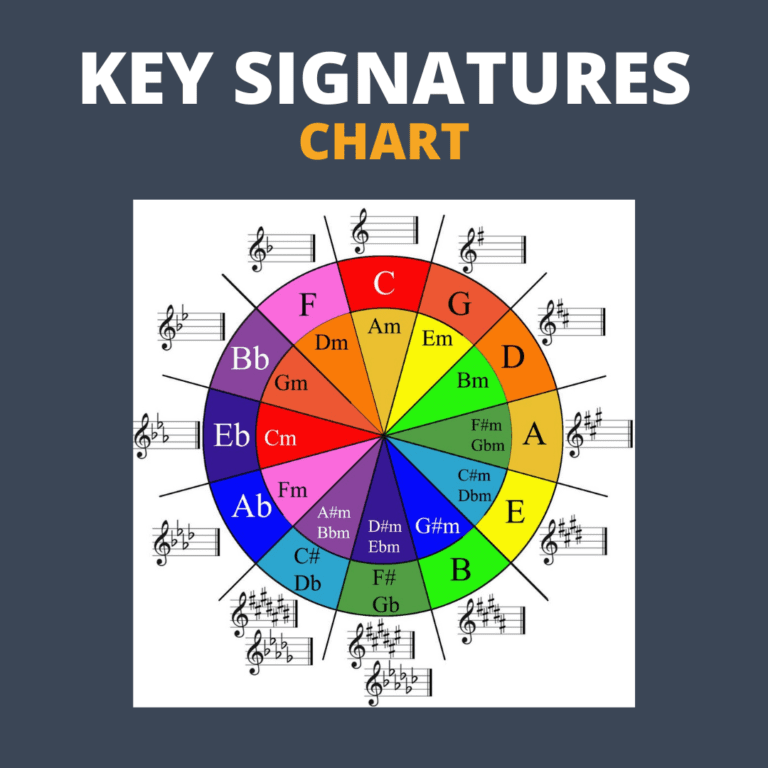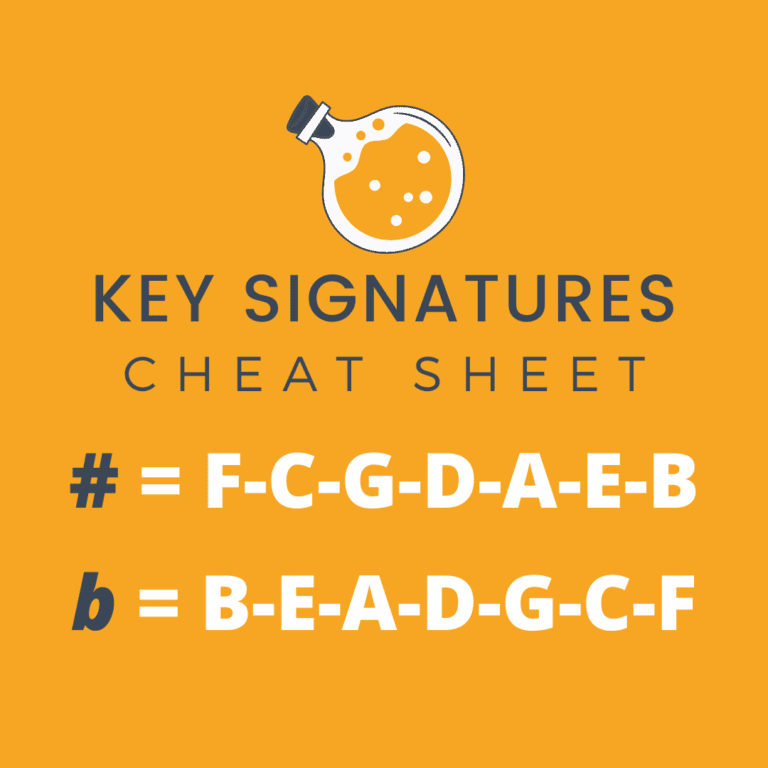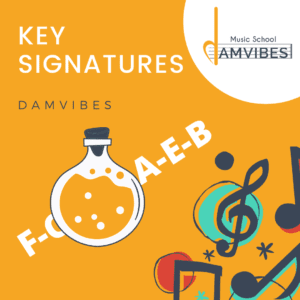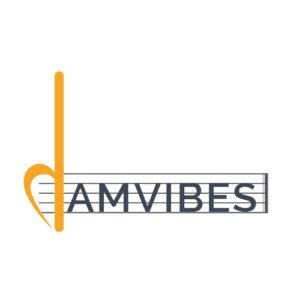Introduction to Music Key Signatures:
In Berlin Music School Damvibes, we start explaining this concept in a very early stage of the student’s learning path, that’s because Music Key Signatures give you infinite number of options and opens a new world of possibilities. Today you will be learning the 24 music key signatures with the following simple trick. Enjoy!
Key Signature Definition
A key signature is a combination of sounds or notes in one determined piece or fragment. Generally, the key is indicated with a determined number of sharps (#) or flats (b) at the beginning of the piece.
What is a Key Signature in Music?
In Cork Music School Damvibes we always put this example; Imagine you have the word “table”, as you know you need to pronounce the silable “ta” with more intensity, with an accent. This happens in music aswell, the majority of pieces or songs lay down on a determine note. This note is called Tonic, and it’s the most important note of the piece or fragment, as it will part of the key signature’s name. For example, imagine the key signature C Major. It is related to C Major Scale, as its tonic is the note C. The concept “Key” represents the relation of the rest of the sounds to the tonic.
C Major Scale
As you can see in the following example C Major Scale or Key doesn’t have any sharps or flats.

Major and Minor Key Signatures
The first thing we need to know is that there are two kind of key signatures in terms of sound: Major and Minor keys. Major keys generally sound more “open”, “happy” and minor keys sound a bit “dark” or “closed”. This, of course, is subjective but you can get an idea by listening to both major and minor chords. Something really interesting about major and minor keys is that all of them are grouped in couples, every major key has a minor brother!
Relative keys
Let’s say you have C major key signature, which has 0 alterations. Well, the brother (technically called “relative”) of C major is A minor. How do I know? Well, you just need to count 3 semitones from C: 1(B), 2(A#) and 3 (A). Then, all relative keys are 3 descendent semitones far from its relative or brother. Another example would be D major. Counting 3 semitones descendently we would get to B minor. But, what does it mean relative exactly and why does that matter to me? Easy, relative key signatures have the same amount of alterations (flats or sharps) meaning that, its scales will contain exactly the same notes but in different order. For instance, and taking C major as reference, C major has de notes C-D-E-F-G-A-B, no alterations and A minor, its relative, has also A-B-C-D-E-F-G but, as you can see, in different order.
Key signatures chart - list
Download the Key Signatures Chart in PDF

How to identify key signatures?
Good news! You don’t have to memorize all the key signatures and its alterations at all, you just need to learn the key signatures cheat sheet!
Key Signatures Cheat Sheet
Learn this trick and you won’t need a key signatures chart anymore!

Key Signatures with sharps (#)
Imagine that you find a music score, for example, This Sonata of Haydn; and you want to know which key signature this piece is written in. This two sharps are the first two sharps wirtte on the Key Signatures Cheat Sheet (F#-C#). Then you get the last note (C#) and add one semitone up. It’s D! Voilà! Now you know that the key with two sharps is D major (or its relative minor, B minor) and its sharps are F# and C #. Easy, right?
This formula also works the other way around. Imagine I ask you to compose a piece in E Major and you need to guess how many sharps it has so you can compose or improvise. Since the key signature is E, we go one semitone lower and it would be D#. Cool, this D# is the last sharp (#) of the cheat sheet: F-C-G-D. Perfect! E Major has 4 sharps, F#, C#, G#,D#.
Key Signatures with flats (b)
Something similar works with key signatures with flats. Let’s say you want to know what the key signature is for a music piece written with 3 flats. Well, you count 3 flats on the cheat sheet, B-E-A. Now, you just need to look at the previous flat: Eb. The key signature with 3 flats is Eb Major (or its relative minor, C minor). Don’t tell me this is not cool!
And, of course, we can do it the other way around. Imagine you need to compose or improvise over a piece in D flat major. How many flats it has? You locate the D on the cheat sheet and you count one more: B-E-A-D-G! The key signature is G Flat Major (or E flat minor, its relative music key.
How do we know it is a sharp/flat key signature?
Just remember this:
1- Major Key signatures that include flat (b) in its name is a flat key signature. Except for F major and its relative minor -D minor, that doesn’t have the word “flat” in its name but it is a flat key, as it has ONE flat.
2- The rest of the key signatures are sharp key signatures
Always remember that this trick only works for major key signatures!
Remember that in order to use this trick you will have to convert the minor key into a major key signature










